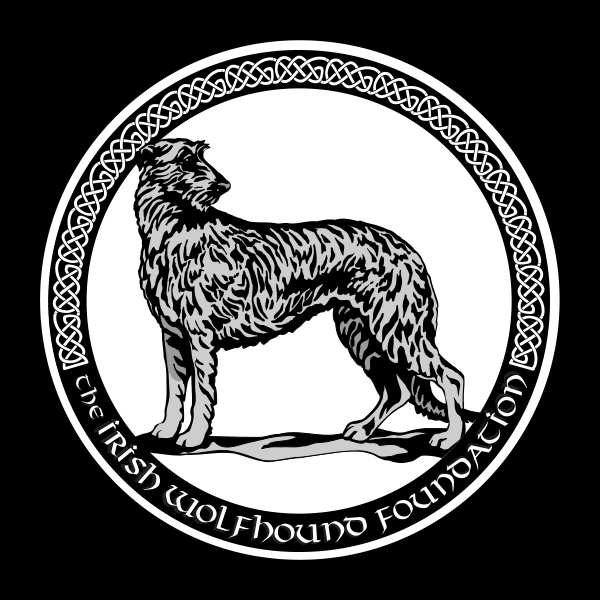Cardiomyopathy in Irish Wolfhounds
by William D. Tyrrell, Jr., DVM, DACVIM (Cardiology)
The most common form of heart disease in the Irish Wolfhound (IWH) is dilatative type cardiomyopathy (DCM). Greater than 99% of IWH with DCM will have concurrent atrial fibrillation, an arrhythmia affecting the top chambers of the heart called the atria. The IWH with DCM typically has a higher survival rate than in breeds such as the Boxer, Doberman and Great Dane with heart disease.
In a 2000 article in the Journal of the American Animal Hospital Association, 50% of the IWH diagnosed with cardiomyopathy survived greater than 15 months of time. Clinical signs of heart disease in the IWH typically relate to both the onset of atrial fibrillation (irregular heart rhythm) as well as left-sided congestive heart failure, e.g., fluid in the lungs or pulmonary edema. The arrhythmia, atrial fibrillation, is characterized as a rapid irregular rhythm disturbance and can be analogous to sneakers in the clothes dryer or jungle drums. The IWH affected with atrial fibrillation is typically exercise intolerant, weak or just “off.” The owner may note a decrease in appetite or lack of desire to go on walks. Occasionally, fainting with exertion may also be noted. Clinical signs relating to left-sided congestive heart failure include labored and rapid breathing, coughing, and exercise intolerance. One may also note that their IWH will not lie down on their side (lateral recumbency) and will sit or lie upright (sternally) as this is easier for them to breathe.
The North American experience with IWH-type DCM is a little different than what is often seen in other commonly affected breeds. The left atrium is typically moderately to severely dilated and the left ventricle is only mildly to moderately enlarged. Furthermore, the left ventricle’s systolic function or pumping ability is usually not severely depressed as in other canine breeds with DCM. Right-sided congestive heart failure (fluid in the chest or belly) can uncommonly occur very late in the stage of DCM.
Treatment is dependent on the stage of the disease. Early detection and early medical intervention has been shown to prolong the lives of IWH for years. Your IWH should be examined at least yearly by your veterinarian, and as they progress in age over 4-5 years of age, twice yearly examinations are recommended. If your veterinarian hears an arrhythmia or heart murmur, consultation with a veterinary cardiologist, if possible, is further recommended. Medication can both improve overall quality and duration of life.
Medical therapy is aimed at the following:
- Arrhythmia control: Medications such as Digoxin, Atenolol, Sotalol or Diltiazem are often used to help slow the overall heart rate of atrial fibrillation. A target resting heart rate in the home environment of less than 100 beats per minute is desired with appropriate dosing. Monitoring of your IWH’s heart rate and rhythm at home is a great way to help your veterinary cardiologist treat your IWH’s heart disease.
- Congestive heart failure treatment: Medications such as Pimobendan (Vetmedin®) and an ACE inhibitor, such as Enalapril or Benazepril, help to both improve the strength of the heart muscle and to dilate the arteries in the body, thus improving the overall efficiency of the heart as the blood pump it is meant to be. There are small studies indicating that the use of Pimobendan prior to congestive heart failure may help improve overall survival time in the IWH.
- Diuretic therapy: Lasix® (Furosemide) and Spironolactone are common diuretics used to help alleviate the fluid or congestion in the lungs secondary to left-sided congestive heart failure.
Of course, the ultimate and overall prevention of the disease is what is most desired.
Breeding: Careful selection of a breeding pair with examination of the pedigree for a history of heart disease is always prudent. Lastly, assuring your IWH is not currently affected with DCM or atrial fibrillation prior to breeding is paramount.


